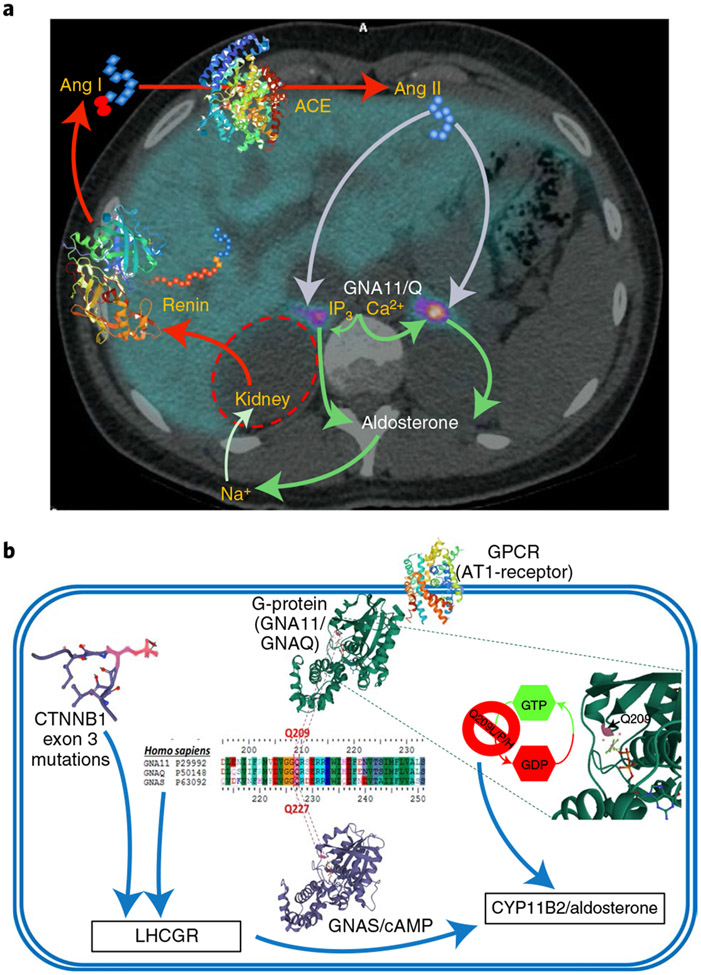Fig. 1 ∣. Clinical and cellular schemata showing the critical roles of GNA11/Q, and their p.Gln209 residue, in the production of aldosterone.
a, The renin–angiotensin–aldosterone system is superimposed on an axial PET CT image through the adrenal glands. The image is taken from the 11C-metomidate PET CT of one of the women whose unilateral (left) double-mutant, aldosterone-producing adenoma (APA) was diagnosed by the scan. Renin, a hormone-enzyme, is secreted from the kidneys in response to falls in blood pressure or sodium (Na+). Its substrate, the protein angiotensinogen, is cleaved into an inert decapeptide, Ang I, which is converted on further cleavage by the angiotensin-converting-enzyme (ACE) into the octapeptide, Ang II. This is a potent vasoconstrictor and principal physiological stimulus of aldosterone production in the ZG cells of the outer adrenal cortex. The cellular actions of Ang II are mediated by coupling of its receptor (AT1R) to IP3 and intracellular calcium (Ca2+) release, through a trimeric G-protein whose α-subunit is either Gα11 or Gαq. b, A single cell of a double-mutant APA, illustrating similar two- and three-dimensional (3D) structures of GNA11/Q and GNAS, proximity of the Q209 (GNA11/Q) or Q227 (GNAS) residue to GDP and synergism between somatic mutations of GNA11/Q and CTNNB1, upregulating LHCGR expression and production of aldosterone. The Q209 residue of Gα11 or Gαq (encoded by GNA11 or GNAQ) and analogous residue of other G-proteins is essential for GTPase activity17. 3D structures for GNAQ and GNAS show the p.Gln residue in purple. Somatic or mosaic mutation of p.Gln inhibits GTPase activity and constitutively activates downstream signaling. We find that p.Gln mutation of GNA11/Q stimulates aldosterone production and, in the adrenal, always coexists with somatic mutation in exon 3 of CTNNB1. This prevents inactivation by phosphorylation (for example, of p.Ser33 (in purple), in the partial 3D sequence). Double mutation of GNA11/Q and CTNNB1 induces high expression of multiple genes, including LHCGR, the Gαs/cyclic adenosine monophosphate-coupled receptor of luteinizing and pregnancy hormones. The 3D structures of CTNNB1, GNAS, GNAQ, AT1-receptor, renin and ACE were downloaded from models 6M93, 3C14, 4QJ3, 6YV1, 2V0Z and 1O8A, respectively, at www.rcsb.org/.

